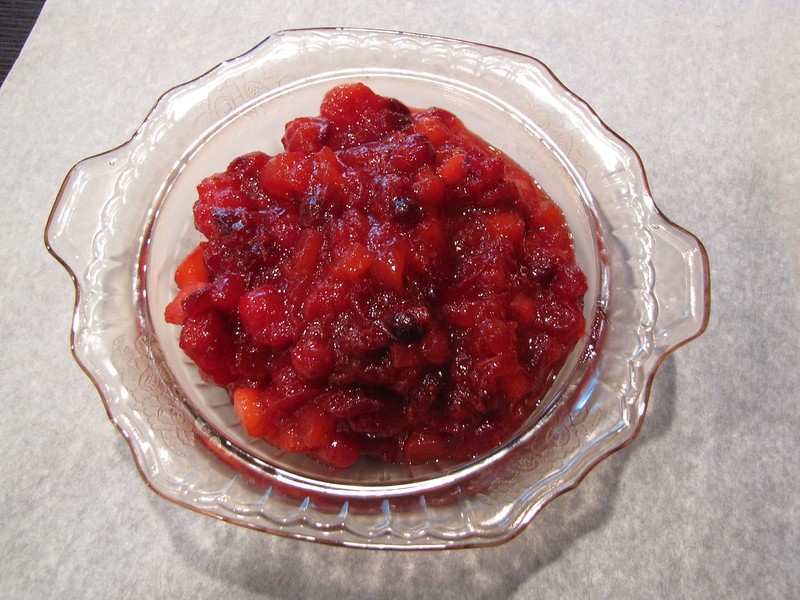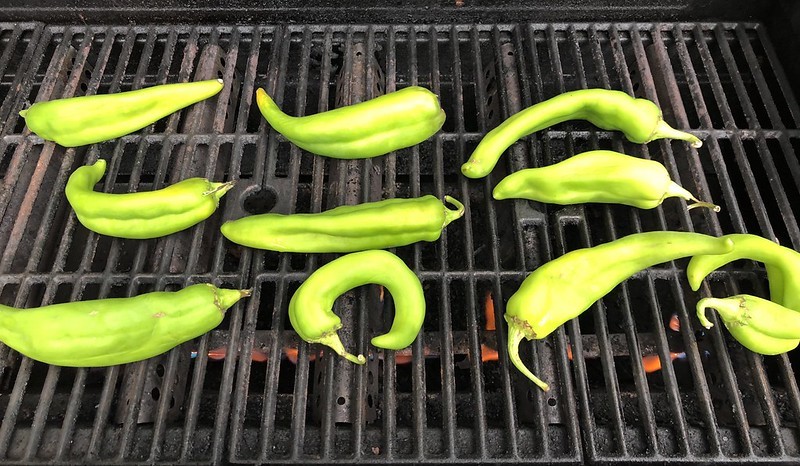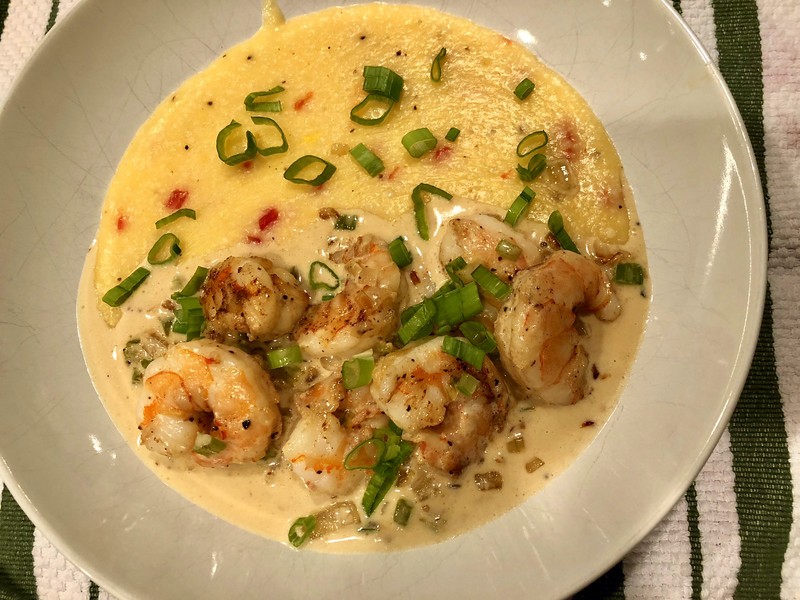There is just nothing better than warm, fresh from the oven, home baked bread.
To be honest, for as much as I’ve always cooked, I’m a little bit of a late-comer to bread baking.
I learned from my mom to make tasty quick breads like Banana Bread and Pumpkin Bread but loaves of yeast bread were just not something that anyone in my family made.
When I lived in Minneapolis, there was a nifty little restaurant in my neighborhood called St. Martin’s Table. In addition to doing good works (all the waiters were volunteers and through tips and donations they contributed over $700,000 to various charities), they made the best wheat bread. The bread became so popular that eventually they started baking extra to sell by the loaf. It was a serious score if I could get there early enough to snag an often still warm loaf to take home.
Sadly, the restaurant and book store is now closed but happily not before they published a little cookbook with the sacred bread recipe. I’ve tweaked it slightly from the restaurant version for home cooking.
Here’s what you need: (and you really do NEED to make this bread)
Unbleached White Flour (regular flour), Whole Wheat Flour, Dry Yeast, Honey, Cooking Oil, Salt, and Water (not pictured).
Click here for a Honey Whole Wheat Bread Shopping List.
I think a lot of cooks shy away from making yeast breads. The recipes get a bad rap as fussy and complicated when they are really quite simple.
There are a few steps that need to be followed and some considerable down time while the dough rises so you need to plan ahead.
That said, you can go about your life while the dough is doing its thing. No need to hover around the kitchen.
Also, yeast has become much more reliable in recent years. Check the expiration date. If your yeast is not expired and still fresh in the package, you’re good to go.
Active Dry Yeast requires just a little preparation to get it going before you make the dough and is the one crucial step where you need to pay attention to the rules and instructions to ensure that your bread dough rises.
IMPORTANT STEP #1 – You need 1 3/4 cups of lukewarm water. I use warm water from the tap but if you want to use filtered water, you can gently warm it on the stove or in the microwave. Use an instant read thermometer to be sure that your water is between 110 and 115 degrees. If the water is too hot or too cold, your yeast won’t activate. Use the thermometer to be sure and save yourself a headache down the road.
Pour the warm water into a large bowl or the bowl of a sturdy stand mixer.
Add 1/4 cup + 1/8 cup of cooking oil to the water. I use canola but any non-flavored oil like safflower or vegetable oil will be fine.
Add 1/4 cup + 1/8 cup of honey to the water. If you measure the oil first, the honey will slide right out of the measuring cups.
I like to use Clover Honey for this recipe because it has a pure honey flavor without any extra flavors. The one time I used Orange Blossom Honey (big here in Florida and great in almost everything else), my bread flavor was a little flowery and weird.
Sorry about the weird measurements of 1/4 + 1/8 cup. They are the result of trimming the restaurant recipe down to dough for one large loaf. To measure 1/8 cup, I simply fill my 1/4 measuring cup half full. It doesn’t need to be exact.
Sprinkle 1 Tablespoon of Active Dry Yeast on the water/oil/honey mixture.
If you are using the little packets of yeast as I have pictured here, you will need 1 whole packet + a little extra from a second packet to make a Tablespoon. Save the opened packet in the refrigerator (I put mine in a zipper bag) as it will still be good as long as it has not expired.
Give a quick stir just to combine. Only stir once or twice around the bowl.
IMPORTANT STEP #2 – Let this mixture rest, untouched, for 10 minutes to activate the yeast.
After 1o minutes, you will have something frothy and slightly spongy like this:
IMPORTANT (and final) STEP #3 – If your yeast hasn’t become frothy like this, stop, throw it out, check the expiration date again and start over. If your yeast is not bubbly, frothy and yeasty smelling, there is no point in going further as your bread will not rise.
Using fresh, non-expired yeast and a thermometer for right the water temperature, I can honestly say I have never had my yeast fail to foam up.
Time to make this science experiment into bread dough. Add 1 Tablespoon salt….
and 1 cup of white flour to the yeast mixture. Stir to combine and incorporate the flour.
With the mixer on the lowest speed, add 1 additional cup of white flour and 3 cups of whole wheat flour.
Mix until the dough and flour have combined. The dough should start to hold together in a ball but will still be slightly sticky.
My big mixer came with an attachment called a dough hook that can be used in place of hand kneading the dough. However, kneading is my favorite part of bread baking. If you are a master of the dough hook, by all means use it (same goes for a bread machine). I’d love to hear tips from someone who is really a fan of the dough hook. Personally, I really like to get in there with my hands and feel the dough transform as I knead from a sticky, slightly grainy blob, to a sleek ball ready for rising.
If you’re going to hand knead, turn the dough out onto a lightly floured (with wheat flour) surface.
While I knead, I will be adding additional flour to the dough. Since I want to monitor that amount, I keep my flour in a measuring cup and add it as needed. I usually add about 1/4 to 1/3 cup more flour but want to be sure that I don’t exceed adding 1 additional cup of flour to the dough.
Put something on the stereo or the tv that you like, or get in a zen frame of mind because you need to knead the dough for 10 minutes.
Press the heal of your hand into the dough, make a quarter turn, fold it over, and repeat again and again.
Use both hands since you’re probably not taking pictures.
When you first start kneading, the dough will pick up the extra flour and you will need to add just a little more from time to time to keep the dough from sticking to your hands and work surface. However, about half way through the 10 minutes of kneading, you will notice that the dough looses its grainy texture, becomes more elastic and stops sticking to the work surface. When that happens, stop adding flour.
Keep kneading for the full 10 minutes. This is the best part (other than eating) of baking homemade bread.
When the dough is fully kneaded, you will find that it has probably already formed itself into a ball. Coat the inside of a large mixing bowl with a little vegetable oil, put the ball of dough in the bowl and turn it over a few times to coat it on all sides with oil.
Cover the bowl with plastic wrap and put it in a warm, draft free place for 60 – 90 minutes to rise.
Since I live in Florida, warm and draft free are not issues for me. When I lived in the frozen north, I used my microwave or oven (obviously not turned on) as good draft free places to let the dough rest and rise.
Go about your life for 90 minutes and let the bread and yeast do its thing. When you check in an hour and a half later, the dough should have doubled in size and puffed up.
Poke your finger down into the dough. If the hole remains, you’re good to go. If the hole collapses or fills in on itself, let the dough rise a little bit longer.
Remove the risen dough to a very lightly floured surface (for this step I use regular white flour) and “punch down” or squeeze all the air out of the dough by kneading it a turn or two.
Without handling the dough too excessively, shape it into an oblong blob by folding the ends around to the bottom. Put the loaf shaped dough into a large, greased loaf pan.
My pan is 10 1/2 x 5 1/2 inches when measured along the top of the pan.
Cover very lightly with plastic wrap or cover with a clean kitchen towel, return it to your warm, draft free place, and let the dough rise a second time until doubled in size. This time, the rising should only take half as long — 30 to 45 minutes.
Preheat the oven to 350 degrees. When the dough has risen the second time, it will have filled up the empty spaces in the loaf pan.
I probably don’t need to say this, but if you have been letting your dough rise in the oven as your draft free place, be sure to take it out BEFORE you preheat the oven.
Bake the bread at 350 degrees for 45 minutes. I like to set my loaf pan on a flat cookie sheet to keep the bottom of the loaf from getting too brown.
After 45 minutes, you will have this glorious browned loaf. Let it cool for a minute or two in the pan and then remove it to cool on a wire rack.
See how long you can wait before cutting it open and slathering a big, thick slice with creamy butter.
Best served warm!
Here’s the recipe – Adapted from St. Martin’s Table



























5 Responses
Holy CATS, spectacular! Potters love working with dough and baking it, indeed, it is so much like clay! Nice recipe here, mmm hmmm….
Holy Cats, you crack me up! Musicians seem to be bread bakers as well. Must be a tactile thing.
Claudia, I love to bake bread. Here are some things I have learned over time: save money and buy yeast in bulk at a restaurant supply store. The one in Orlando sells a 16-ounce brick of vacuum-packed Saf-instant brand yeast for $3.25. Use a disposable latex food-prep glove on one hand when kneading, and hold a wooden spoon in the other for turning the dough (A clean, dry hand is very desirable for when the phone rings). You can knead your dough in the mixing bowl in the sink and avoid messing up the counter or board. Grease your loaf pans with Crisco (even the non-stick ones) and sprinkle sesame, poppy, or sunflower seeds on the bottom of the pan before putting in the dough. That way the seeds will not fall off. No need to cement them on with an egg wash. Clean your mixing bowl with COLD water first. Warm water just turns any dough left in the bowl into paste. Happy baking!
Thanks for the great tips Roz!